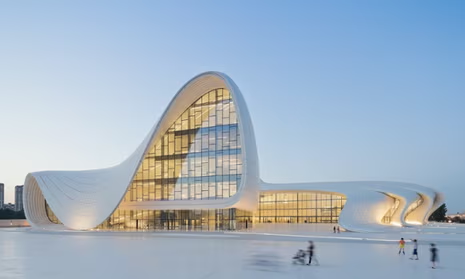Imagine the following scenario: A pregnant woman waits outside a clinic, shifting from one foot to the other. There’s no seat available, and the only restroom nearby is barely functional. She’s not alone in her discomfort.
Such daily struggles are common, especially because they’re a part of poor architectural design. At the 2024 ICLEI World Congress in São Paulo, over 1,500 global leaders endorsed a Gender Declaration to redesign cities with women in mind. What’s ironic is the fact that women continue to hold only 35.5% of local government positions worldwide.
That would explain the tangible gap that shapes nearly every sidewalk, station, or public restroom. The truth is that excluding women from the design table leaves a city’s larger needs unmet. This article will discuss three public spaces where architecture is yet to catch up with women’s needs, and why it matters.
Public Restrooms: Functional But Failing
The state of public restrooms across Canada and even the US is pretty somber. For instance, a recent poll in Canada found that three in four people would avoid stopping at a public washroom while traveling. Moreover, 87 minutes was the average time Canadians were willing to hold it in to avoid using a public restroom.
As for the US, big cities like New York City are struggling with a dearth of public restrooms. That would explain why a long walk on its streets would offend someone’s olfactory senses. The need of the hour, as deciphered from both examples, is sufficient public restrooms that are also usable and hygienic. That’s a far cry from designing spaces that align with how women use them.
Simply installing doors, stalls, and sinks is not enough. A persistent issue has been that of queue equity. On average, women have a longer wait time outside public restrooms, given the fact that a toilet area can accommodate 20%-30% more urinals and cabins for men.
Another reason could be the fact that women tend to spend twice as much time in the restroom for practical reasons. Such reasons may include clothing changes, menstruation, or caregiving needs.
Sadly, design ratios frequently fail to reflect this. The restroom layouts are cramped, there are not enough stalls, and the lighting is poor. All of these issues amplify women’s discomfort. Here’s how architects and designers can design public restrooms with more empathy, so they become spaces of basic dignity, and not compromise:
- Stall-to-user ratios should be such that they reduce queue times and reflect actual usage patterns.
- Stall dimensions should be widened, so there’s enough space for menstruation-related needs, pregnant women, and those accompanying children.
- Every stall must have secure hooks and ledges for coats, bags, and personal belongings.
- Well-placed, periodically serviced sanitary bins are a must inside every stall, not just the shared ones.
- Soft, evenly distributed lighting and good airflow ought to be prioritized for safety and comfort.
- Baby-changing stations should be installed to meet the needs of mothers.
- Private, secure spaces can be integrated for breastfeeding or pumping milk.
Healthcare Waiting Areas: Places of Care, But Not Comfort
When one generally thinks of a healthcare waiting area, what comes to mind is a space where people prepare to receive help, answers, or relief. While most spaces like these meet this basic criterion, they fail to offer comfort, especially to women during pregnancy or menstruation.
Two examples that highlight the problem include hard chairs and harsh clinical lighting. The disconnect becomes more urgent as wait time increases. For instance, England’s healthcare wait time disparities are shocking. Compared to May 2014’s gynecological appointments, where 185,000 women had to wait, the number had grown to 597,000 as of May 2024.
Such backlogs showcase not only clinical delays but also the prolonged physical and psychological burden women carry in liminal waiting spaces. Take the example of a woman with excruciating cramps during menstruation. She may avoid certain foods or snacks altogether to prevent bloating or restroom trips.
This is one small yet powerful area where architectural design can make a thoughtful difference. Waiting spaces can include mini food stations stocked with light, nourishing options. If the selections are recommended by an expert-approved guide to period snacks, women can eat confidently and mindfully at this time without triggering digestive or urinary discomfort.
Livia shares that curating a proper menstruation menu can ease cramps, reduce bloating, and provide relief from mood swings. Such benefits can improve how women experience long wait times in clinical environments. However, nutrition is just one of the many facets. Here are other ways in which architects can make healthcare waiting areas more women-friendly:
- Comfort-oriented seating zones can be integrated, equipped with cushioned, reclined seats and warm pads to ease cramping.
- Semi-enclosed alcoves with soft lighting and noise insulation would allow women to rest quietly while waiting.
- Menstrual wellness stations are a must that discreetly offer sanitary products, wet wipes, heating patches, etc.
- Body-sensitive seating options like wider chairs and back support should be available for pregnant and postpartum women.
- A designated play area for children would help mothers attend their appointments without added stress.
- Clean and well-stocked restrooms should be accessible with multiple stalls.
Urban Parks: Open But Not Always Safe
Urban parks do not appear threatening at first glance. In fact, they’re supposed to be open, inclusive, and welcoming spaces where people can relax. That’s not the reality for women, as many carry a quiet tension between relaxation and risk.
In truth, women are thrice as likely as men to feel unsafe in public parks, even during daytime. The disparity only worsens after dark, which restricts access to such areas. A lot of women tend to avoid parks altogether. Some may alter their behavior, like taking longer routes or only visiting during busy hours.
Since parks are public spaces, they shouldn’t be inaccessible to anybody. Both men and women have the right to enjoy nature’s physical and psychological benefits to the fullest. It’s undeniable that architectural oversight is central to such an inequity.
Poor lighting, a lack of clear sightlines, and visually obstructive landscaping create environments where women feel vulnerable. These features are not merely aesthetic choices because they impact usability and inclusivity at a fundamental level.
The need of the hour is for architects to move beyond the form to more gender-sensitive urban planning. That’s the only way to ensure that women get to enjoy public parks confidently. Here are some much-needed architectural solutions for safer urban parks:
- Consistent, glare-free lighting is important along all paths, rest areas, entrances, and exits.
- Landscaping should be done to maintain open visibility across spaces. Dense foliage and blind corners are an emphatic no!
- Each of the park’s zones should be visible from multiple vantage points.
- CCTV cameras should be installed at all key points. Additionally, emergency call stations and panic buttons are a must for deterring questionable behaviors.
- Well-lit, socially visible seating areas should be made, each facing a walkway or an open space.
- Gateways should be easily identifiable and in proximity to main roads or public transport.
- Clear, multilingual signage should be prioritized for location, exits, etc.
- Food stalls or twilight group walks can be hosted frequently to keep the area well-lit and sufficiently crowded.
Amid the clouds of architectural shortcomings is a silver lining: workplaces are increasingly being designed with women’s needs in mind. A few distinct examples would be nursing rooms, hybrid models, ergonomic workstations, and zoned layouts.
The areas that are still blind to the nuances of women’s safety and biological rhythms need to catch up. Thoughtful, inclusive design is not an option; it’s a necessity. Women shouldn’t have to adapt to a public space. It’s high time that the spaces adapt to women’s needs.







